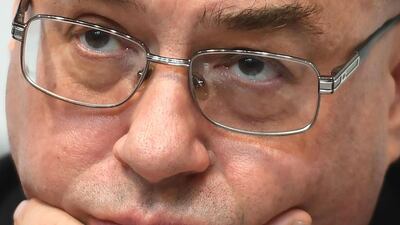The Bank of England played down the roll-out of negative interest rates to offset the damaging effects of Covid-19 and urged pundits not to read too much into the possibility of such a move, according to governor Andrew Bailey.
While Mr Bailey said the bank had “looked hard” at interest rate cuts and they are in the monetary policy toolbox, he stressed that last week's policy statement was not a hint the BoE would implement negative rates.
Instead, any investigations in this area are more exploratory to see whether such a move can be implemented rather than a firm signal that they are coming, Mr Bailey told a webinar for the British Chambers of Commerce.
“It doesn’t imply anything about the possibility of us using negative instruments,” he said. “We have looked hard at the question of what the scope is to cut interest rates further and particularly negative rates.”
The BoE held interest rates at a record low of 0.1 per cent last week, as Mr Bailey said it did not intend to tighten monetary policy until economic conditions improve.
The UK regulator also left the size of its bond-buying programme unchanged at £745 billion ($966bn/Dh3.5 trillion).
Mr Bailey said escalating Covid-19 coronavirus cases were "very unfortunate" and did "reinforce the downside risks" for the UK economy, and said the BoE would do everything it could to support the economy.
His comments came shortly after the government urged people to work from home again if possible, reversing its drive to get employees back into workplaces.
The pound recouped losses after slipping to two-month lows against the dollar on Tuesday, recovering as much as 0.08 per cent to $1.2826 against the dollar at 8.40am in London after sliding as low as $1.2714 earlier in the day, its lowest level since July 23.
"The UK government has told the public to work from home if possible and this has increased the virus fear among investors," said Naeem Aslam, chief market analyst at London's Avatrade. "What worries the investors most is if these targeted lockdowns remain ineffective and are then replaced by stronger measures, such as the national lockdowns we saw back in March this year.
"Implementing another national lockdown will also likely undo most of summer’s recovery. This means that the unemployment rate that is being kept low artificially in a large number of countries via government support will start to rise again."
UK policy makers are also expected to expand their bond-buying plan in November. Mr Bailey said at the webinar that the economy remains 7-10 per cent smaller than it was before the crisis, and the “hard yards” remain ahead.


